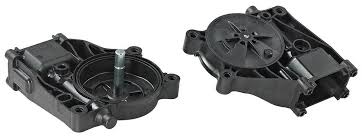Innovation lies at the heart of every successful product development endeavor. As industries strive to create cutting-edge solutions that meet evolving consumer demands, manufacturers are turning to advanced techniques like insert molding to drive innovation and achieve unparalleled results. This article delves into the transformative power of insert molding in fostering product innovation, exploring its capabilities, applications, and the myriad of benefits it offers to businesses and consumers alike.
Understanding Insert Molding
Insert molding represents a sophisticated manufacturing process that combines injection molding with the integration of pre-formed components, known as inserts, into a molded part. These inserts can be made from various materials, including metals, plastics, ceramics, and electronic components. Unlike traditional assembly methods, which involve separate manufacturing steps for each component, insert molding streamlines the production process by consolidating multiple materials into a single, cohesive unit in a single operation.
The Innovation Potential of Insert Molding
Harnessing the power of insert molding unlocks a world of possibilities for product innovation. By seamlessly integrating diverse materials and components into a single molded part, manufacturers can create products that are not only structurally robust and aesthetically appealing but also offer enhanced functionality and performance. The following are some key ways in which insert molding drives product innovation:
Design Flexibility
Insert molding offers unparalleled design flexibility, allowing manufacturers to create complex, multi-material components with ease. This versatility enables the integration of various materials, such as metals, plastics, and electronics, to achieve unique shapes, textures, and functionalities. Whether reinforcing parts with metal inserts for added strength or incorporating electronic components for enhanced functionality, insert molding empowers designers to bring their creative visions to life.
Multi-Material Integration
One of the most significant advantages of insert molding is its ability to seamlessly integrate multiple materials into a single molded part. This opens up a world of possibilities for product innovation, allowing manufacturers to combine the unique properties of different materials to achieve desired performance characteristics. For example, metal inserts can provide structural reinforcement and conductivity, while plastic or rubber inserts can offer cushioning or sealing properties. By carefully selecting and integrating materials, manufacturers can optimize product performance and deliver innovative solutions that meet the needs of diverse applications.
Customization and Personalization
In today’s consumer-driven market, customization and personalization are increasingly important factors driving purchasing decisions. Insert molding enables manufacturers to tailor products to specific customer preferences and requirements by incorporating custom features, branding elements, or functional enhancements. Whether it’s adding logos, textures, or color accents to consumer electronics or integrating personalized medical features into healthcare devices, insert molding allows for limitless customization options, fostering stronger brand loyalty and customer satisfaction.
Miniaturization and Lightweighting
In industries where size and weight are critical considerations, such as automotive, aerospace, and consumer electronics, insert molding offers significant advantages. By integrating components and reducing the need for separate fasteners or adhesives, insert molding enables manufacturers to miniaturize products and achieve substantial weight savings without compromising structural integrity or performance. This not only enhances portability and usability but also improves energy efficiency and sustainability, aligning with the growing demand for lightweight, eco-friendly solutions.
Functional Integration
Beyond aesthetics, insert molding facilitates the seamless integration of functional components and features into products, enhancing their utility and value. For example, in the automotive industry, insert molding is used to integrate sensors, connectors, and electronic components directly into dashboard panels or interior trim, streamlining installation and improving reliability. Similarly, in medical device manufacturing, insert molding enables the integration of fluid channels, electrodes, or drug delivery systems into device housings or handles, enhancing functionality and usability for healthcare professionals and patients alike.
Applications Across Industries
The versatility and innovation potential of insert molding make it applicable across a wide range of industries and products. Some common applications include:
- Automotive components (e.g., dashboard switches, sensors, connectors)
- Consumer electronics (e.g., circuit boards, connectors, housings)
- Medical devices (e.g., catheters, surgical instruments, fluid delivery systems)
- Aerospace and defense (e.g., aircraft interior components, avionics housings, UAVs)
- Consumer goods (e.g., appliance components, electronic enclosures, sporting equipment)
Conclusion
In conclusion, insert molding serves as a powerful catalyst for product innovation, enabling manufacturers to push the boundaries of creativity and functionality. By seamlessly integrating diverse materials and components into a single molded part, insert molding empowers designers to create products that are not only visually striking but also offer enhanced performance, functionality, and user experience. As industries continue to evolve and consumer demands evolve, insert molding will remain at the forefront of innovation, driving progress and shaping the future of product development across diverse sectors.




